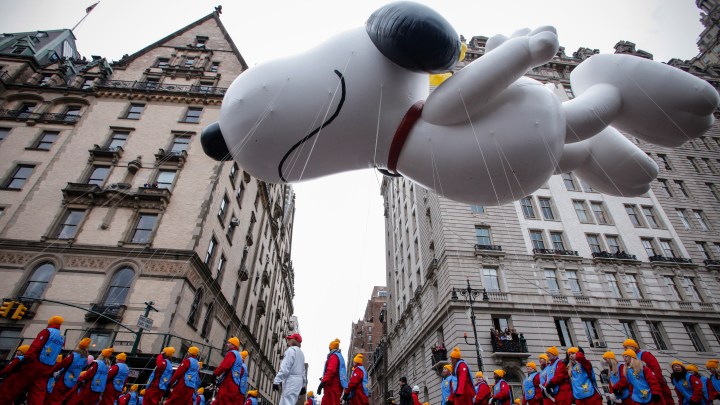
Helium prices stopped soaring when COVID hit

Thursday — no matter how it looks or feels where you are — is Thanksgiving. Macy’s has hosted and broadcast a Thanksgiving Day parade in New York with giant balloons for almost 100 years now.
Something like that will still happen this year. It’ll be scaled back to just a block — not exactly a parade. But the big balloons, some as tall as five stories, will be there.
Helium’s been in short supply for years, actually. But because of the pandemic, helium is not so scarce. But that doesn’t mean the price of helium has dropped.
The giant Thanksgiving Day parade balloons are filled with a mix of helium and air, so no worries there. But other industries and businesses use this non-renewable resource — for semiconductor manufacturing, MRIs, rocket engines. Helium is also used in science research.
Bill Halperin is a physicist at Northwestern University. Five years ago, he says he was paying $4.50 for a liter of helium. Then there were a few shortages, and at the beginning of 2020 he started paying $12 a liter.
“Because there are very few providers, they can decide if they want to increase the price or not, and we don’t have any choice,” he said.
And that was before COVID-19 jammed up supply chains. With only 14 active helium plants in the world and a handful of suppliers in the U.S., shortages happen often and helium prices fluctuate.
Sophia Hayes, a chemist at Washington University in St. Louis, uses helium in her labs, and the prices are set years in advance by contract. So she had what she needed.
“While we weren’t able to do research, we keep — let’s say, take care of the feeding of these pieces of equipment by continuing to go in and supply them with helium,” she said.
But when COVID-19 hit, everything from birthday parties to MRIs were canceled, and global demand for helium went down by 25%.
“And the shortage quickly came to an end. And it actually turned into a bit of a surplus,” said helium industry consultant Phil Kornbluth.
Now demand has returned.
In the U.S., helium is stored at an underground federal reserve. It’s set to be shut down or sold next year and that may mean more price uncertainty ahead.
There’s a lot happening in the world. Through it all, Marketplace is here for you.
You rely on Marketplace to break down the world’s events and tell you how it affects you in a fact-based, approachable way. We rely on your financial support to keep making that possible.
Your donation today powers the independent journalism that you rely on. For just $5/month, you can help sustain Marketplace so we can keep reporting on the things that matter to you.











